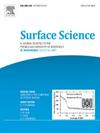Surface grain orientation mapping using grazing incidence X-ray diffraction
IF 1.8
4区 化学
Q3 CHEMISTRY, PHYSICAL
引用次数: 0
Abstract
Tomographic surface X-ray diffraction (TSXRD) is an adaptation of classic surface X-ray diffraction to allow for measurements of polycrystalline surfaces. Compared to most other surface-sensitive techniques, surface X-ray diffraction has advantages in operando studies, since it can provide crystallographic information about surface structures in high gas pressures (above atmospheric) as well as through liquids. The method has, however, so far been limited to ideal samples, such as single crystals, since the long beam footprint illuminates several grains, which, with conventional SXRD, prevents an assignment of the diffraction signal and thus the structural information, to a certain grain. Here, we present the first step in the development of TSXRD, in which the grain shapes and orientations on a polycrystalline surface can be mapped using grazing incidence X-ray diffraction. The resulting knowledge about the shape, position, and orientation of the grains at the surface will be the steppingstone for further SXRD analysis of polycrystalline surfaces, allowing us to identify which diffraction signals belong to which grain. This method is thus part of opening up SXRD as a method for operando studies of more industry-relevant samples. Our grain maps are compared to those obtained with electron back-scatter diffraction measurements of the same sample, confirming the validity of the method.

掠入射x射线衍射的表面晶粒取向测绘
层析表面x射线衍射(TSXRD)是经典表面x射线衍射的一种改编,允许测量多晶表面。与大多数其他表面敏感技术相比,表面x射线衍射在operando研究中具有优势,因为它可以提供高压(高于大气)和液体中表面结构的晶体学信息。然而,到目前为止,该方法仅限于理想样品,如单晶,因为长光束足迹照亮了几个颗粒,这与传统的SXRD相比,阻止了衍射信号的分配,从而阻止了结构信息的分配。在这里,我们提出了TSXRD发展的第一步,其中可以使用掠入射x射线衍射来映射多晶表面上的晶粒形状和取向。由此得到的关于表面晶粒的形状、位置和取向的知识将成为进一步对多晶表面进行SXRD分析的基石,使我们能够确定哪个衍射信号属于哪个晶粒。因此,该方法是开放SXRD作为更多工业相关样品的operando研究方法的一部分。将我们的颗粒图与同一样品的电子后向散射衍射测量结果进行了比较,证实了该方法的有效性。
本文章由计算机程序翻译,如有差异,请以英文原文为准。
求助全文
约1分钟内获得全文
求助全文
来源期刊

Surface Science
化学-物理:凝聚态物理
CiteScore
3.30
自引率
5.30%
发文量
137
审稿时长
25 days
期刊介绍:
Surface Science is devoted to elucidating the fundamental aspects of chemistry and physics occurring at a wide range of surfaces and interfaces and to disseminating this knowledge fast. The journal welcomes a broad spectrum of topics, including but not limited to:
• model systems (e.g. in Ultra High Vacuum) under well-controlled reactive conditions
• nanoscale science and engineering, including manipulation of matter at the atomic/molecular scale and assembly phenomena
• reactivity of surfaces as related to various applied areas including heterogeneous catalysis, chemistry at electrified interfaces, and semiconductors functionalization
• phenomena at interfaces relevant to energy storage and conversion, and fuels production and utilization
• surface reactivity for environmental protection and pollution remediation
• interactions at surfaces of soft matter, including polymers and biomaterials.
Both experimental and theoretical work, including modeling, is within the scope of the journal. Work published in Surface Science reaches a wide readership, from chemistry and physics to biology and materials science and engineering, providing an excellent forum for cross-fertilization of ideas and broad dissemination of scientific discoveries.
 求助内容:
求助内容: 应助结果提醒方式:
应助结果提醒方式:


